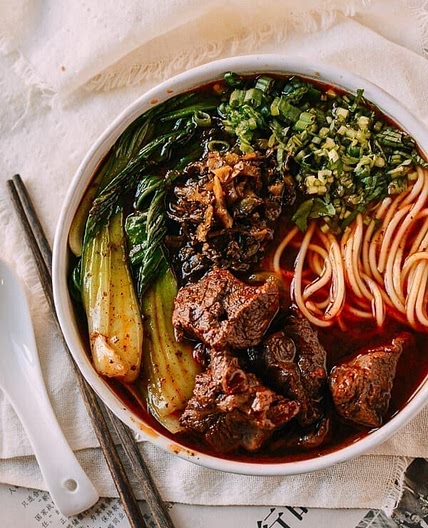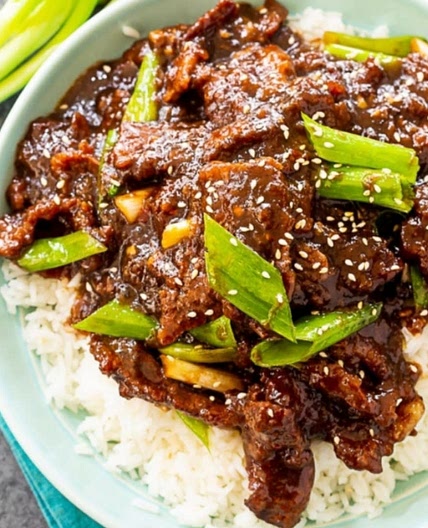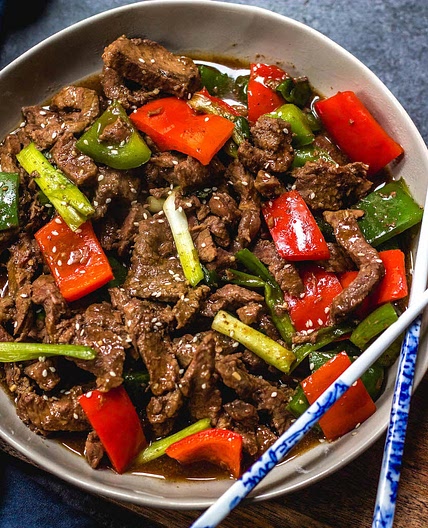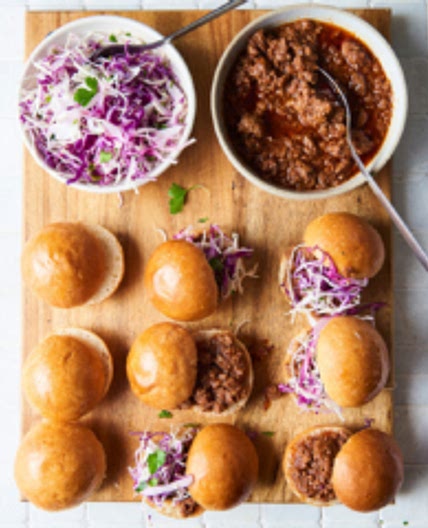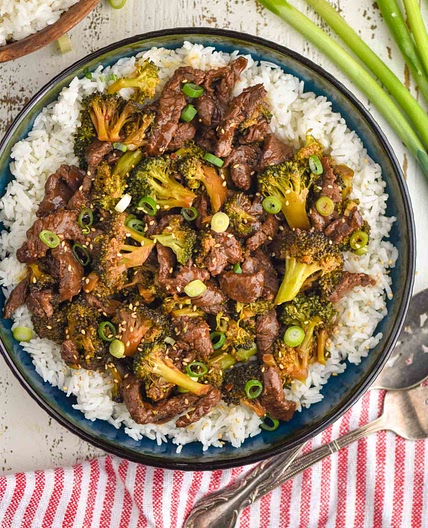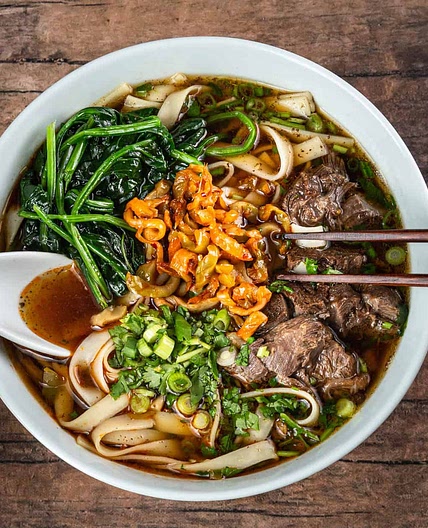By Katya Lyukum
Dargin Khinkal | Daghestani Dumplings Meal
Dargin khinkal can be compared to steamed Asian buns, which exist in many forms and shapes. Daghestani dumplings have a similar texture but are unique for their flavor added with blue fenugreek (aka “nutty herb”).
The best meat, beef or lamb, for this preparation is the one with a lot of cartilage and connective tissue (e.g., leg, shoulder, or neck of lamb or shanks, shoulder, short ribs of beef, etc.). Bone-in meat is preferred for more flavor. Since we serve meat and broth, removing any foam when meat is initially brought to boiling is essential.
Noory-tsahdon sauce can be made with garlic and hot broth or cold sour cream. Hot broth quickly blanches the garlic to make it less pungent and bitter. I like adding hot broth to the garlic first, then mixing it with sour cream.
Forget forks and spoons! Feel how soft and tender meat is with your fingers, break it apart, dip a piece into the sauce and eat. Do the same with light and puffy steamed khinkal. Sip some broth from a little bowl. Don’t forget to lick your fingers! Enjoy!
Updated at: Thu, 17 Aug 2023 12:03:22 GMT
Nutrition balance score
Uh-oh! We're unable to calculate nutrition for this recipe because some ingredients aren't recognized.
Ingredients
6 servings
for meat and broth (6-quart pressure cooker "Instant Pot")
1.5 lbbeef shoulder
prime
1.5 lbbeef short ribs
with bone, prime
1 eachonion
1 eachcarrot
1 stickcelery
2bay leaf
1 tspblack pepper corns
1 Tbspkosher salt
1 bunchcilantro
for dumplings
7 ozall-purpose flour
½ tspInstant Yeast
1 tspsugar
½ tspkosher salt
½ tspbaking powder
1 Tbspavocado oil
or any other mild tasting oil
110mlwater
warm, 100F
1 Tbspwalnut oil
for brushing
1 Tbspblue fenugreek
for sprinkling
for sauce
Instructions
for meat and broth
Step 1
In a medium sized pot, bring 1 gallon of water to boiling. If short ribs is a whole piece, cut it into four equal portions, each one with a rib bone. Place them in boiling water and blanch for 2 minutes. Transfer meat into the pot of a pressure cooker. Cut beef shoulder into six portions, blanch in the same water, add to the short ribs. Line strainer with a paper towel (unscented!) and strain water into the same pot with meat. Discard the towel with foam and scam.
Step 2
Peel onion and quarter it. Peel carrot and cut into large chanks. Chop celery. Add all vegetables, bay leaf, black pepper, 6 peeled and smashed cloves of garlic, and safflower to the pot. Secure the lid and choose "Meat/Stew" button.
Step 3
When done, take out meat, discurd bones. Strain broth, discard vegetables and spices. Keep meat submerged in the broth.
for dumplings (18 mini buns)
Step 4
In a bowl, combine dry ingredients. Combine liquid ingredients in a separate bowl, add them to dry ingredients, stir with chopsticks, knead, and ferment for 1-2 hours (72-74F) until doubled, or refrigerated for 12 hours.
Step 5
Dust working surface with flour. Roll the dough into a 7 x 18" rectangular. It should be about 1/8" thick. Apply a thin layer of walnut oil with a culinary brush, sprinkle with blue fenugreek, and roll it tightly. You should get a cylinder 1" D, 18" long. Slice it into 18 portions 1" long. Place them vertically in a steaming basket lined with greased parchment, cover, and let rise for 30 minutes.
Step 6
Start boiling water in a steamer. It takes 5-6 minutes for these dumplings to steam. They almost double in size when ready for cooking, make sure there is enough space between them.
for sauce
Step 7
Peel and finely dice garlic. Place it in a small bowl, season with salt and black pepper, and add 6oz (3/4 cup) of hot beef stock. Stir and let it cool down to room temperature. Add sour cream and finely chopped cilantro, combine, and adjust seasoning to your taste.
for serving
Step 8
Prepare a dinner plate, a sauce bowl, and an 8oz cup for broth for each person. Start steaming khinkal and reheating cooked meat and broth at the same time. Portion the sauce, the meat, and the broth. Top them with fresh cilantro. Add three steamed dumplings to each plate with meat and serve.
View on lyukum.com
↑Support creators by visiting their site 😊



